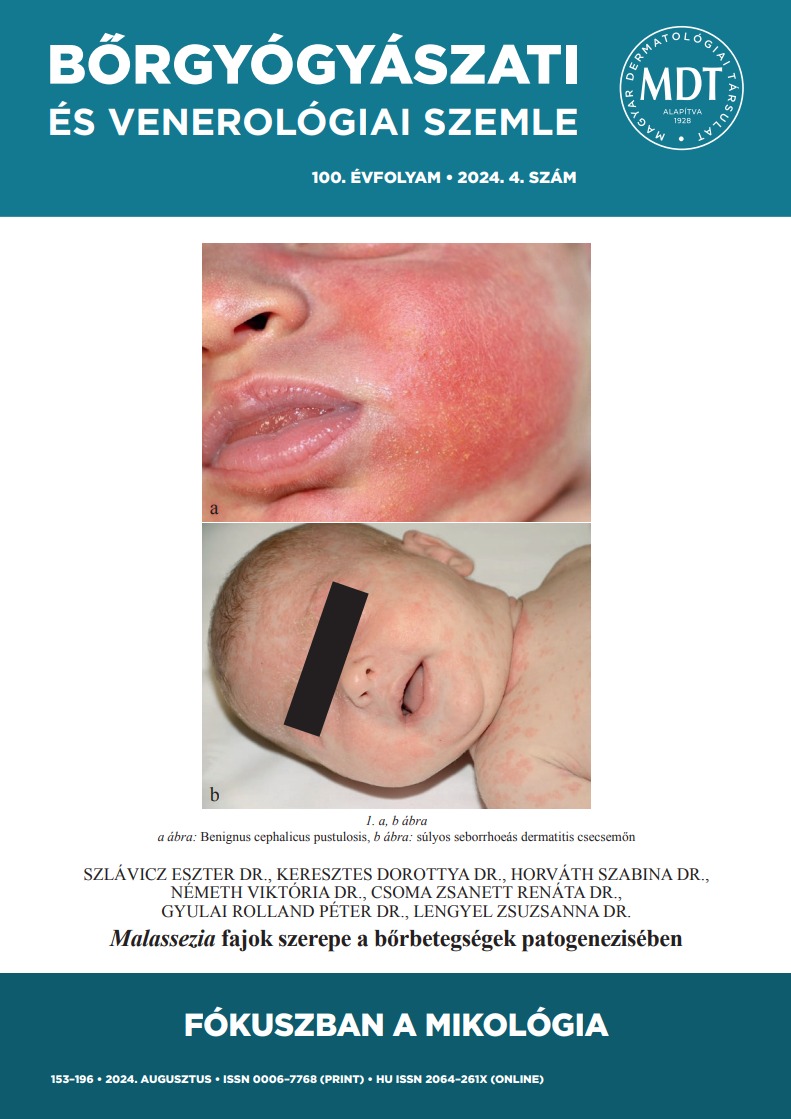Phaeohyphomycosis in an immunocompromised patient
Abstract
Phaeohyphomycosis comprises a rare group of fungal infections caused by pigmented filamentous (mold) fungi, caused by various species. The most common manifestations of subcutaneous infection include subcutaneous nodules, abscesses, and cysts. The authors present the case of a 52-year-old patient, immunosuppressed due to heart transplantation, who developed subcutaneous erythematous, livid nodules on both legs. During histological examination, in addition to extensive dermal lobular infiltration, PAS reaction-positive septated fungal elements were visible. During repeated histological sampling and culture Curvularia infection was confirmed. The plant spike detected in the second biopsy supported the fact of traumatic inoculation. The skin signs resolved after 4 months of voriconazole therapy.




